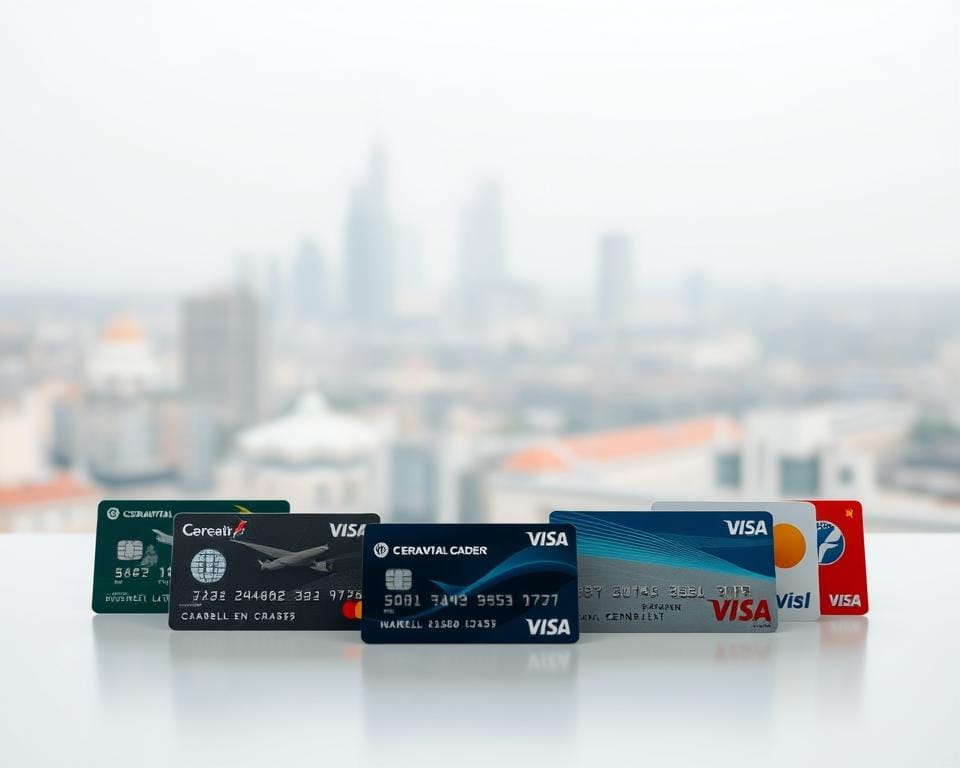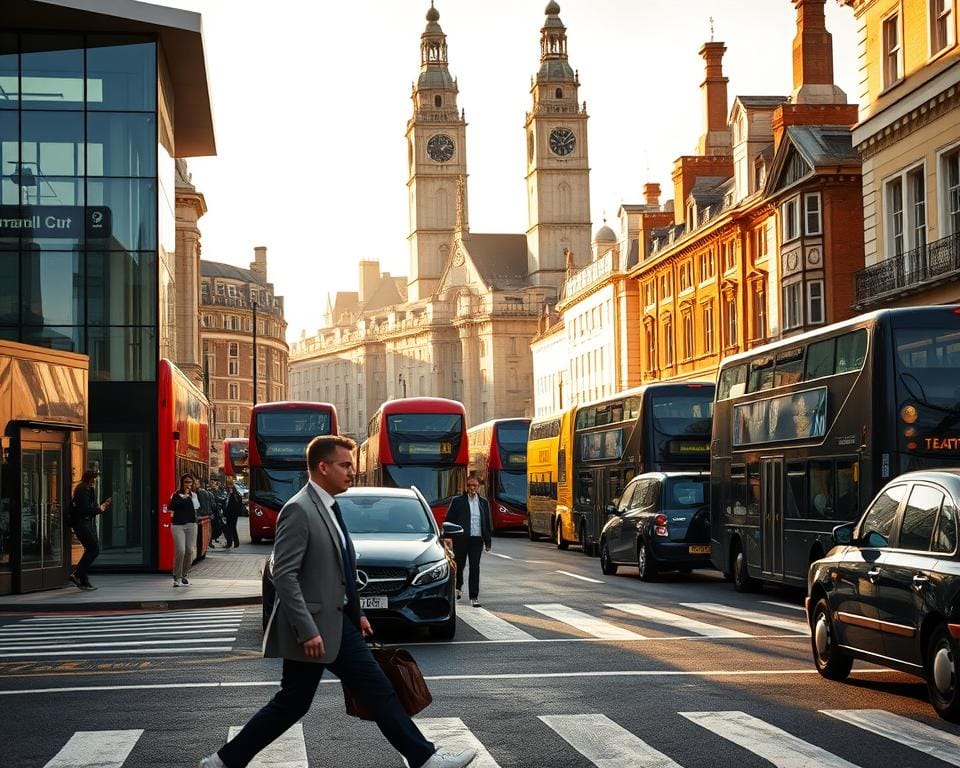Imagine arriving in a new country, where 750,000 international students every year master buses, trains, and trams to explore everything from London’s buzz to the Lake District’s tranquillity. Sounds daunting? It doesn’t have to be. Britain’s transport web – one of Europe’s most intricate systems – can feel overwhelming at first glance. But what if I told you those colourful Underground lines and double-decker buses hold the keys to stress-free adventures?
Having cracked the code myself, I’ve seen how understanding this network early turns frantic map-checking into confident journeys. The secret lies not in memorising every route, but in grasping how different services connect. Regional trains whisk you between cities in hours, while local buses reveal hidden villages most tourists miss. Even better – budget-friendly travel hacks make exploring surprisingly affordable once you know where to look.
This guide strips away the complexity. You’ll learn why mixing transport types saves both time and money, how contactless payments simplify everything, and which apps locals swear by. Forget tourist confusion – I’ll show you how to move through stations and streets like someone who’s done it for years.
Key Takeaways
- Britain’s integrated transport system connects cities and countryside efficiently
- Early familiarity with different modes prevents common newcomer stresses
- Contactless payment options streamline journeys across most services
- Strategic planning turns complex routes into straightforward adventures
- Local knowledge helps avoid peak-time crowds and hidden costs
Understanding the UK Public Transport System
When I first arrived, the mix of transport options felt like solving a puzzle. The key? Recognising how each piece fits. You’ll mainly encounter five forms: buses, trains, trams, the London Underground, and ferries. Each has its own rhythm – buses stick to road timetables, trains zip between cities on dedicated lines, and trams glide through urban centres.
Overview of Modes and Networks
Buses form the backbone of local travel, especially outside London. Many routes are council-run, keeping fares reasonable. Trains handle longer distances – National Rail connects major cities, while regional services reach smaller towns. Trams in places like Manchester simplify city commutes with frequent stops.
London’s Underground needs no introduction, but did you know it links seamlessly with Overground trains and buses? Coastal areas like Portsmouth even use ferries for regular commutes. The trick is spotting where these networks intersect – main stations often have bus stops right outside.
Key Regional Differences
What works in Birmingham might baffle you in Bristol. London uses zones for pricing, while Manchester’s Metrolink offers day passes covering trams and buses. Edinburgh’s buses are stellar, but Glasgow leans heavier on suburban trains.
My golden rule? Match the transport type to your journey length. Quick city hops? Trams or buses. Cross-country adventures? Trains every time. Coastal explorations? Ferries add scenic value you’ll miss on roads.
Navigating UK Public Transport: Essential Travel Prep
Getting your travel sorted before you step out makes all the difference. I learned this the hard way during my first rainy Tuesday commute when I fumbled with coins at a bus stop. Let’s sort your prep work together – think of it as packing an umbrella before the storm hits.

Smart Choices for Tickets and Passes
Railcards transformed my travel budget. The 16-25 option saved me 33% on train fares – perfect for weekend escapes. Couples should grab the Two Together card; it pays for itself in two return trips to Brighton.
City buses became cheaper when I discovered weekly passes. Manchester’s system lets you hop on any route within Zone 2 for £17. Students – always ask about discounts! My university ID got me 25% off local trams that I didn’t even know existed.
Three prep steps I never skip:
- Loading my Railcard onto the Trainline app
- Saving bus timetables offline
- Checking for engineering works 24 hours before travel
Season tickets work best if you’re making the same journey thrice weekly. For occasional trips, singles often cost less than returns – counterintuitive but true. Pro tip: National Rail’s journey planner shows the cheapest ticket options if you tweak travel times by 15 minutes.
Mastering the Oyster Card and Payment Options
When I first tapped my Oyster card at a London Underground gate, I immediately understood why locals swear by it. This little blue card became my golden ticket to stress-free travel – but I also discovered contactless payments work just as smoothly in most cases. Let’s break down which option suits your needs best.
Oyster Card vs Contactless
Oyster cards shine for regular commuters. I saved 11% compared to contactless during my first month by hitting daily fare caps (£8.50 across zones 1-4 vs £9.60 with contactless). The real game-changer? Weekly caps kick in automatically from Monday to Sunday. If you’re making five+ journeys weekly, Oyster’s tracking features help budget precisely.
Contactless cards offer convenience for spontaneous trips. I use mine when exploring new areas unexpectedly – no need to check Oyster balances. Both systems use the same fare structure, but foreign transaction fees might apply to non-UK bank cards.
Budgeting for Daily Journeys
Here’s my foolproof method: Map your regular routes using TfL’s single fare finder, then multiply by trip frequency. Add 10% for unplanned detours. For example:
- Zone 1-2 daily cap: £8.10
- Weekly cap (Mon-Sun): £40.70
- Monthly saver option: £160.90 (saves £14 vs weekly rates)
Enable auto-top-up on your Oyster card through TfL’s website. I set mine to £20 – when balance drops below £10, it refills instantly. Always tap the same card consistently; mixing Oyster and contactless prevents caps from applying properly.
Utilising Public Transport Apps for Real-Time Information
I used to panic when buses didn’t show up – until apps turned my phone into a transport control centre. These tools cut through the chaos of timetables and diversions, giving you the upper hand in any city. Here’s how to make them work for you.
Your Pocket Travel Assistants
Citymapper became my go-to during a chaotic Edinburgh trip. When trams halted unexpectedly, it instantly mapped a bus-walk combo that saved 40 minutes. The app’s strength? Showing live departure times alongside disruptions – crucial when plans change mid-journey.
Londoners swear by the TfL app for good reason. Its real-time tube updates helped me dodge a 25-minute delay at King’s Cross last week. Bonus: bus arrival countdowns are accurate to ±1 minute – no more guessing games at stops.
Why Journey Planners Are Game-Changers
These tools don’t just find routes – they optimise them. National Rail Enquiries once suggested splitting my York-London ticket, saving £18. The trick? Letting apps handle the maths on fares and timings.
Three features I rely on daily:
- Push notifications about strikes or weather delays
- Multi-mode comparisons (walking vs waiting for a bus)
- Saved routes for regular commutes
My weekend exploration combo? Citymapper for spontaneity, plus local apps like West Midlands Network for live tram positions. For trains, National Rail’s platform numbers appear 10 minutes before departure – perfect for stress-free changes.
Exploring City-Specific Transport Options
Each British city dances to its own transport rhythm. I learned this the hard way in Edinburgh, where I stubbornly waited for a tram that only runs to the airport – while locals hopped on buses disappearing down cobbled lanes. Let’s unpack what makes each urban hub unique.
London Underground & Regional Buses
The Tube’s colourful map hides clever shortcuts. During my first month in London, I avoided Bank station’s maze by using Monument’s parallel platforms instead. Pro tip: Central line trains get Saharan-hot – stick to the front carriage where air-con works best.
Outside the capital, buses become stars. Brighton’s network reaches beachfront gems trains skip, while Bristol’s metrobus lanes slash journey times. My Manchester revelation? Metrolink trams glide past traffic jams, connecting Salford Quays to Chorlton in 22 flat minutes.
Tips for Historic and Modern Cities
Ancient streets demand different strategies. York’s medieval centre works best by foot and bus – the Park&Ride system saved me £15 parking fines. Birmingham’s growing tram network surprised me with how quickly it links New Street station to jewellery quarter workshops.
Three universal rules I follow:
- Download city-specific apps before arrival (TfL for London, Bee Network for Manchester)
- Ask drivers about return tickets – many regional buses offer cheaper round trips
- Stand clear of tram doors – locals appreciate swift boarding
Edinburgh’s airport tram taught me to always check connection times – buses from Leith often beat the light rail during festivals. Whatever your destination, remember: cities reward those who embrace their transport quirks.
Travel Tips for Commutes and Leisure Journeys
I once spent 47 minutes pressed against a train window during rush hour – a mistake I’ll never repeat. Timing and planning transform chaotic journeys into smooth rides, whether you’re commuting to work or exploring Cornwall’s coastline.

Avoiding Peak Hours
Shift your schedule by 30 minutes to dodge the 7-9am and 4-6pm crushes. Leaving Manchester Piccadilly at 9:30am instead of 8:45am meant I always got a seat. Evening theatre trips became more enjoyable when I caught the 6:45pm train instead of the 5:30pm scramble.
Weekday services run like clockwork, but frequencies drop after 8pm. I plan homeward journeys before 7:30pm to avoid hour-long waits. Sundays require extra caution – some rural routes only operate every two hours.
Smart Route Planning
My golden rule: always have a plan B. When strikes cancelled my Bristol-bound train, the National Express coach got me there faster than rail replacement buses. Apps like Citymapper show alternative routes in real-time – I’ve discovered scenic bus shortcuts that shave 15 minutes off my Oxford Street shopping trips.
Three strategies I use daily:
- Bookmark quiet stations for easier boarding
- Walk between nearby stops to catch emptier carriages
- Check weekend timetables the night before
Last Tuesday, taking the Overground from Highbury & Islington instead of the Victoria Line saved me 12 minutes. It’s these small adjustments that turn stressful journeys into effortless transitions between destinations.
Overcoming Common Challenges in UK Transport
Mastering transport hiccups becomes second nature once you know the tricks. I’ve navigated everything from sudden rail replacements to crowded trams – here’s how to stay cool when plans go sideways.
Handling Delays Like a Pro
Always check apps 30 minutes before departure. During a major train delay last winter, Citymapper redirected me to a faster bus-train combo. Services often share updates before station boards refresh. If stuck, ask staff about “Delay Repay” schemes – I’ve claimed £42 in compensation this year alone.
Safety Smarts and Local Etiquette
Keep bags zipped and phones pocketed in busy stations. I use crossbody straps – they deter pickpockets without screaming “tourist”. On buses, move away from doors after boarding. Locals appreciate when you offer seats to elderly passengers before the priority signs light up.
Got caught in the ULEZ zone once? Penalty charges hurt, but TfL’s auto-pay option prevents repeat mistakes. For ticket checks, keep digital receipts handy. My rule: photograph physical tickets immediately after purchase. It’s saved me from three fare disputes already.

